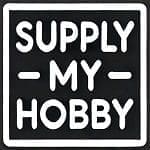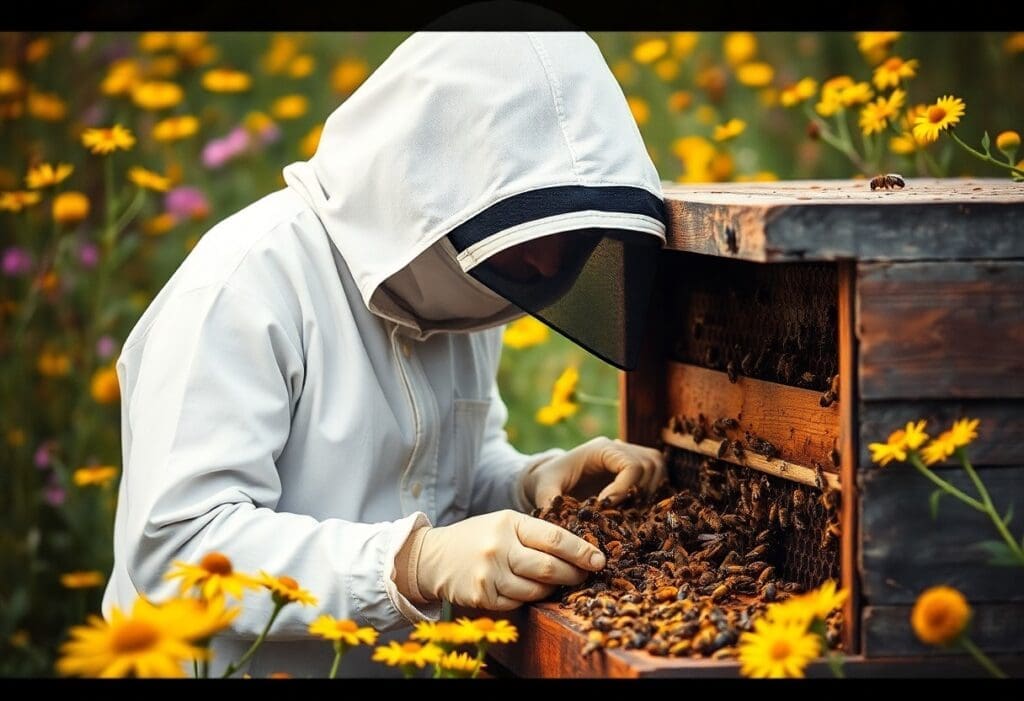Most people are fascinated by the idea of keeping bees, but getting started can feel overwhelming. This guide will walk you through the vital steps to begin on your beekeeping journey, from selecting the right equipment to understanding bee behavior.
You’ll gain insights into hive maintenance and honey harvesting, allowing you to cultivate a thriving bee colony in your backyard.
Whether you’re motivated by a love for nature or the desire for homegrown honey, this beginner’s guide will equip you with the knowledge and confidence needed to become a successful beekeeper.
The Fascinating World of Honeybees
The Intricate Society Within the Hive
The bee colony operates like a finely tuned machine, where every individual plays a specific role in the survival of the group. Communication among bees is sophisticated; they use pheromones and dance patterns to convey messages about food sources and hive conditions.
This intricate social structure allows your colony to thrive, ensuring that tasks like foraging, brood care, and hive maintenance are conducted efficiently. Understanding this dynamics gives insight into the health and productivity of your hive.
Roles and Responsibilities: Queen, Workers, and Drones
The hierarchy of the hive consists of three distinct castes: the queen, the workers, and the drones, each fulfilling vital functions. The queen, the sole reproductive female, lays thousands of eggs daily.
Worker bees, which are sterile females, handle the bulk of the tasks, including foraging, feeding larvae, and cleaning the hive.
Drones, the male bees, exist solely to mate with a queen and typically do not contribute to hive maintenance or foraging. With each role, the balance of the colony is maintained, contributing to its overall success.
The queen is the heart of the hive, and without her, the colony’s future is in jeopardy. A healthy queen lays around 1,500 eggs per day, ensuring a steady population of workers to sustain the hive.
The workers, numbering anywhere from a few hundred to over 60,000 depending on the season, so meticulously take care of all the daily operational needs—from pollen collection to guarding against intruders.
Drones are less numerous and typically number in the hundreds, only emerging during mating flights. This division of labor illustrates how efficiently a sustainable environment can be created, making your beekeeping endeavors rewarding and productive.
Essential Beekeeping Equipment for Newbees
Must-Have Tools for Every Apiary
Your toolkit for beekeeping should include necessities like a bee suit for protection, gloves for safety, and a hive tool for maintenance. A smoker is also necessary to calm the bees during inspections.
Additionally, a feeder will help provide syrup during nectar dearths, and a quality frame grip ensures easy handling of combs. These fundamental tools enable you to manage your hive efficiently while minimizing stress for both you and your bees.
Choosing the Right Hive Structure: Langstroth vs. Top-Bar vs. Warre
Selecting the proper hive structure heavily influences your beekeeping experience. Langstroth hives, often preferred for their modular design, allow for easy management and honey harvesting.
Top-bar hives offer a more natural approach, ideal for those wishing to prioritize bee welfare over honey production. Warre hives blend simplicity and effectiveness, making them suitable for beginners who want minimal intervention.
Your choice should reflect your beekeeping goals, comfort level, and commitment.
The Langstroth hive, recognized globally, features vertical stacks of removable frames, promoting efficient honey extraction and easy colony management.
In contrast, top-bar hives favor horizontal design and encourage bees to build natural comb, attracting those who appreciate a hands-off, organic method. Warre hives maintain a balance between the two, emphasizing minimal interference with a focus on the colony’s natural behaviors.
Ultimately, considering how much time and effort you want to invest in your bees will guide your decision in selecting the best hive structure for your apiary.
Navigating Local Regulations and Permits
Understanding Zoning Laws Related to Beekeeping
Zoning laws can significantly impact your ability to keep bees at home. Many local jurisdictions have specific regulations regarding the placement and quantity of hives. You might find that some residential areas limit hive numbers or mandate distance from property lines.
Checking with your city or county zoning office can help you clarify these requirements, ensuring your beekeeping efforts align with local guidelines.
Connecting with Local Beekeeping Associations
Local beekeeping associations are invaluable resources for beginners. Connecting with seasoned beekeepers in these organizations offers you mentorship, educational workshops, and social networking.
Many cities have clubs that host events, bringing together enthusiasts who can share insights, recommend sources for equipment and bees, and discuss local laws.
This type of community allows you to tap into a wealth of experience and fosters a supportive environment for your new hobby.
Becoming involved with local beekeeping associations often leads to greater engagement and support as you initiate on your beekeeping journey.
These groups frequently organize beginner classes to help you understand the practical aspects of hive management, pest control, and seasonal practices.
Many associations also host hive inspections, providing hands-on learning opportunities while allowing you to ask questions and receive immediate feedback.
Beyond educational support, the camaraderie found within these networks can help reassure you and celebrate your beekeeping milestones along the way.
Starting Your Own Hive: A Step-by-Step Approach
| Step | Description |
|---|---|
| Step 1: Choose Your Location | Select a sunny, sheltered spot with a water source nearby. Ensure it’s away from high traffic areas and has sufficient forage resources. |
| Step 2: Decide on Hive Type | Choose between Langstroth, Top Bar, or Warre hives. Each type has its advantages, so consider your budget and management style. |
| Step 3: Purchase Equipment | Your basic kit should include a hive, protective gear, smoker, hive tool, and bee brush. |
| Step 4: Finding Bees | Source bees from local beekeepers or reputable suppliers. Packages, nucs, or established colonies are common options. |
| Step 5: Installing the Bees | Carefully introduce your bees into the hive, ensuring they have access to their queen and enough space to acclimatize. |
| Step 6: Monitor and Maintain | Regularly check your hive every 7-10 days for signs of diseases, pests, and overall hive health. |
Finding and Installing Your First Colony
Finding the right colony is imperative for a successful start. Local beekeepers or reputable suppliers can provide you with packages, nucs, or even a complete hive that includes an established queen and workers.
Installing your bees should be approached with care; follow the specific instructions provided by the supplier to ensure a smooth transition. Allow them some time to settle into their new environment before performing any initial checks.
Essential Care Techniques for New Beekeepers
Developing a routine care strategy will significantly impact your hive’s health. Regular inspections help you monitor for pests, diseases, and queen productivity. Make notes during each check to track conditions and changes over time.
Adjust feeding schedules based on nectar flow, and provide supplemental sugar syrup when necessary. Learning about the specific needs of your bee species can also help optimize their living conditions and promote thriving colonies.
Essential care techniques involve a blend of observation and immediate action. Regular hive inspections serve to identify early signs of stress or infestation, such as Varroa mites or American Foulbrood.
During these inspections, take time to observe the behavior of your bees.
- Are they calm or agitated?
- Are they carrying in pollen?
In addition to a regular feeding schedule, consider monitoring weather conditions, as temperature fluctuations can impact hive dynamics.
Ultimately, your adaptability and readiness to act based on your observations will set the foundation for your beekeeping success.
Honey Production: The Sweet Reward
Timing Your Harvest: When is the Right Moment?
Harvesting honey requires keen observation of the hive’s activity and the conditions surrounding it. Aim for the late summer to early fall when the majority of the surplus honey has been capped with wax by the bees, indicating it’s ready for extraction.
You’ll know the timing is right if you notice a significant reduction in their foraging activity and the frames are filled and capped. This way, you’ll ensure you are taking honey without depleting the bees’ winter stores.
Techniques for Extracting and Bottling Honey
To obtain honey efficiently, extraction techniques can make all the difference. The most common method involves using a honey extractor, a device that spins frames to force honey out with centrifugal force.
Alternatively, if you’re just starting out and have limited equipment, manually crushing the comb and straining it may be more suitable. After extraction, you’ll want to strain the honey through a fine mesh to remove impurities and wax particles before bottling.
Using a honey extractor not only saves time but also preserves the integrity of the comb. This allows you to return the frames to the bees for reuse, which contributes to sustainability in your beekeeping practices. If you choose the crush-and-strain method, be prepared to lose the comb structure, but it offers a hands-on, rewarding experience.
After straining, you can pour the honey into clean, sterilized jars that are air-tight, ensuring that the delicious product remains uncontaminated while also adding a personal touch to your labels for friends and family.
Protecting Your Bees: Diseases and Pests
Identifying Common Threats to Bee Health
Several diseases and pests can threaten your hive’s wellbeing. Varroa mites, one of the most notorious pests, can weaken your bees by feeding on their bodily fluids and spreading pathogens.
Additionally, American Foulbrood and Nosema are two prevalent diseases that can decimate a colony if not effectively managed.
Keep an eye out for unusual bee behavior, signs of hive distress, and changes in population numbers, as these can all indicate underlying health issues.
Natural and Chemical Solutions for Keeping Bees Healthy
Maintaining your hive’s health involves a combination of natural remedies and, when necessary, chemical treatments. Natural solutions like crucial oils and herbal treatments can help combat pests while promoting bee vitality.
For more severe infestations, however, chemical treatments may become necessary to protect your colony. Both methods have their time and place; understanding your hive’s unique needs will guide your choices.
Utilizing natural solutions such as thymol and tea tree oil can effectively repel pests and boost your bees’ immune system without harming their delicate ecosystem.
Regular inspections help you catch issues early, allowing for treatment adjustments as needed. In contrast, chemical treatments, including miticides and antibiotics, should be applied judiciously, following local guidelines to minimize environmental impact.
Establishing a balanced approach will not only safeguard their health but also contribute to the broader ecosystem, fostering a thriving environment for your bees to flourish.
Embracing Sustainable Beekeeping Practices
The Environmental Impact of Beekeeping
Your beekeeping efforts can significantly benefit the environment. Healthy bee populations contribute to biodiversity by pollinating a vast array of plants, including fruits, vegetables, and wildflowers.
In fact, around 75% of global crops depend on pollinators like bees, underscoring their important role in maintaining ecosystems. Responsible beekeeping practices ensure that you create a thriving hive that not only produces honey but also supports local flora and fauna.
Supporting Pollinator Populations Beyond Your Hive
Enhancing the habitat around your apiary can benefit not just your bees, but other pollinators as well. Simple actions such as planting diverse native flowers, creating “bee hotels” for solitary bees, and maintaining pesticide-free zones contribute to a healthier ecosystem.
Organic gardening practices provide additional support, fostering environments rich in biodiversity and attracting a variety of pollinators. In turn, this promotes a balanced environment where bees and other pivotal species can flourish alongside your hive.
Consider incorporating a pollinator garden into your landscape, filled with wildflowers and nectar-rich plants that bloom at different times throughout the season. The more floral resources available, the more you’ll invite diverse pollinator species to join the community.
Practices such as these not only help your honey bees but also enhance the overall health of your local ecosystem, creating a synergy between your beekeeping endeavor and nature’s intricate web of life.
Building a Community: Engaging with Fellow Beekeepers
Finding Mentorship and Support Networks
Connecting with experienced beekeepers can accelerate your learning curve significantly. Look for local beekeeping clubs or organizations that offer mentorship programs, workshops, or hands-on training sessions.
Many seasoned beekeepers enjoy sharing their knowledge and are eager to guide newcomers through the various challenges this craft presents.
Online forums and social media groups also provide excellent platforms for asking questions and receiving advice from a diverse group of individuals.
Sharing Knowledge: The Importance of Local Beekeeping Groups
Joining a local beekeeping group enriches your understanding and enhances your skills through shared experiences. These communities often host educational events, allowing you to learn from experts and gain insights into best practices, pest management, and hive maintenance.
Furthermore, they serve as a platform to discuss challenges you face, receive constructive feedback, and celebrate your successes with others who share your passion. Engaging with a local group can foster friendships with fellow beekeepers, fostering collaboration that benefits everyone involved.
Whether you attend monthly meetings, participate in seasonal hive inspections, or exchange equipment, the camaraderie found in local beekeeping groups fosters a supportive environment that promotes growth.
Many groups also host open hive days, giving you a chance to observe the intricacies of beekeeping in action while connecting with others who may have faced similar hurdles.
By sharing resources, tools, and knowledge, you’ll cultivate not only your beekeeping skills but also a network of passionate individuals who can offer unwavering support throughout your beekeeping journey.
Summing up
Now that you have a beginner’s guide to beekeeping, you’re equipped with the necessary knowledge to start your journey.
Understanding the basics of bee biology, hive management, and the importance of local ecosystems will enhance your beekeeping experience.
By committing to continual learning and observing your bees regularly, you’ll cultivate a thriving hive that benefits both you and the environment.
Embrace the challenge, and enjoy the rewards of your beekeeping adventure!



